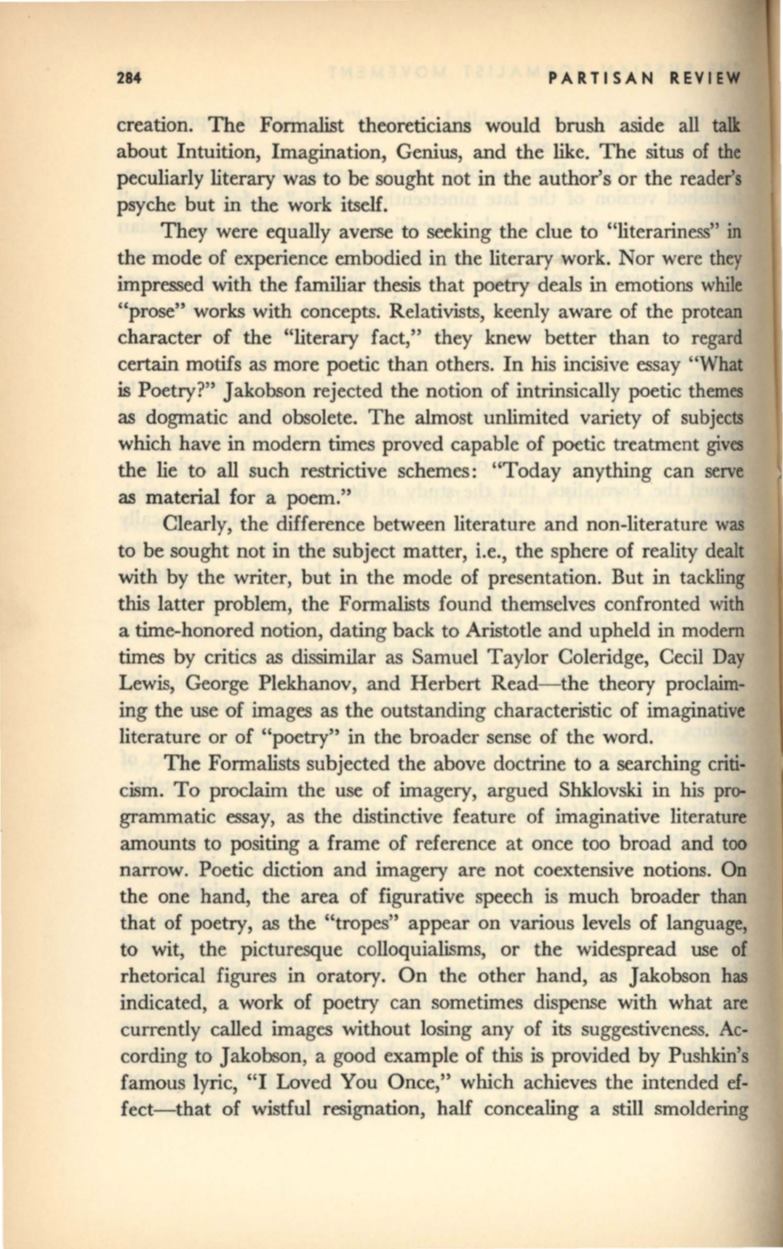
284
PARTISAN REVIEW
creation. The Formalist theoreticians would brush aside all talk
about Intuition, Imagination, Genius, and the like. The situs of the
peculiarly literary was to be sought not in the author's or the reader's
psyche but in the work itself.
They were equally averse to seeking the clue to "literariness" in
the mode of experience embodied in the literary work. Nor were they
impressed with the familiar thesis that poetry deals in emotions while
"prose" works with concepts. Relativists, keenly aware of the protean
character of the "literary fact," they knew better than to regard
certain motifs as more poetic than others. In his incisive essay "What
is Poetry?" Jakobson rejected the notion of intrinsically poetic themes
as dogmatic and obsolete. The almost unlimited variety of subjects
which have in modern times proved capable of poetic treatment gives
the lie to all such restrictive schemes: "Today anything can serve
as material for a poem."
Clearly, the difference between literature and non-literature was
to be sought not in the subject matter, i.e., the sphere of reality dealt
with by the writer, but in the mode of presentation. But in tackling
this latter problem, the Formalists found themselves confronted with
a time-honored notion, dating back to Aristotle and upheld in modem
times by critics as dissimilar as Samuel Taylor Coleridge, Cecil Day
Lewis, George Plekhanov, and Herbert Read-the theory proclaim–
ing the use of images as the outstanding characteristic of imaginative
literature or of "poetry" in the broader sense of the word.
The Formalists subjected the above doctrine to a searching criti–
cism. To proclaim the use of imagery, argued Shklovski
in
his pro–
grammatic essay, as the distinctive feature of imaginative literature
amounts to positing a frame of reference at once too broad and too
narrow. Poetic diction and imagery are not coextensive notions. On
the one hand, the area of figurative speech is much broader than
that of poetry, as the "tropes" appear on various levels of language,
to wit, the picturesque colloquialisms, or the widespread use of
rhetorical figures in oratory. On the other hand, as Jakobson has
indicated, a work of poetry can sometimes dispense with what are
currently called images without losing any of its suggestiveness.
Ac–
cording to Jakobson, a good example of this is provided by Pushkin's
famous lyric, "I Loved You Once," which achieves the intended
ef–
fect-that of wistful resignation, half concealing a still smoldering


